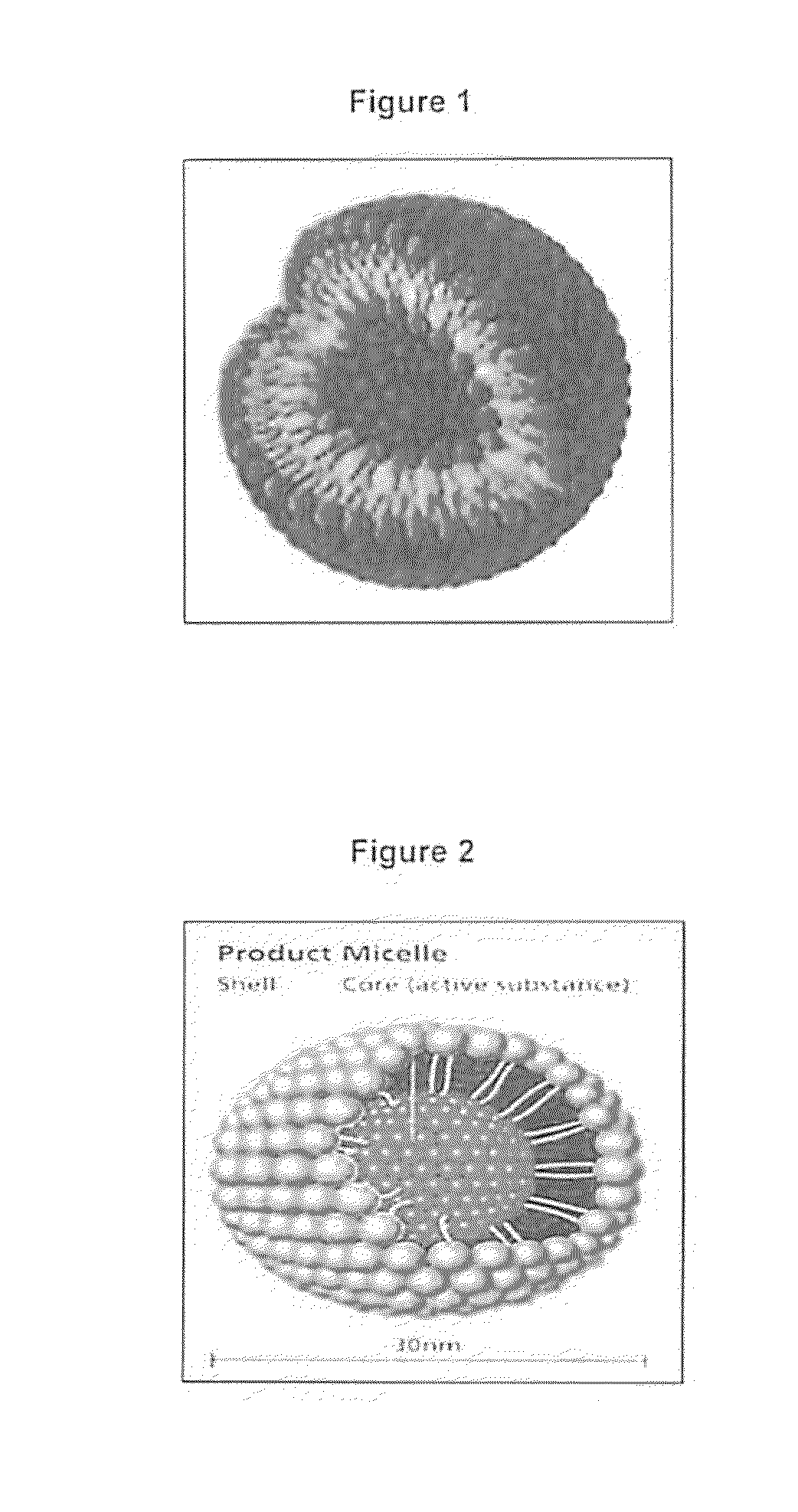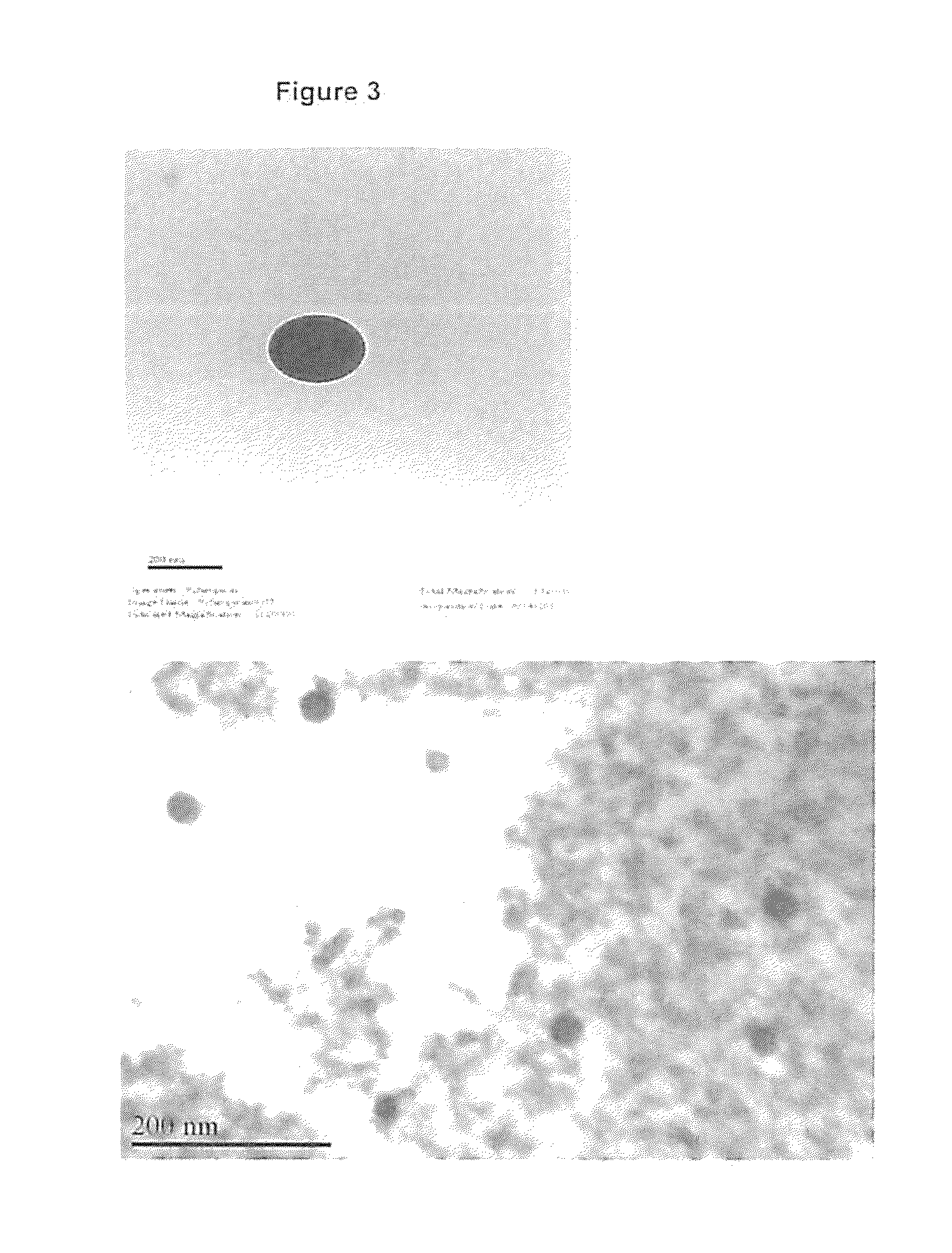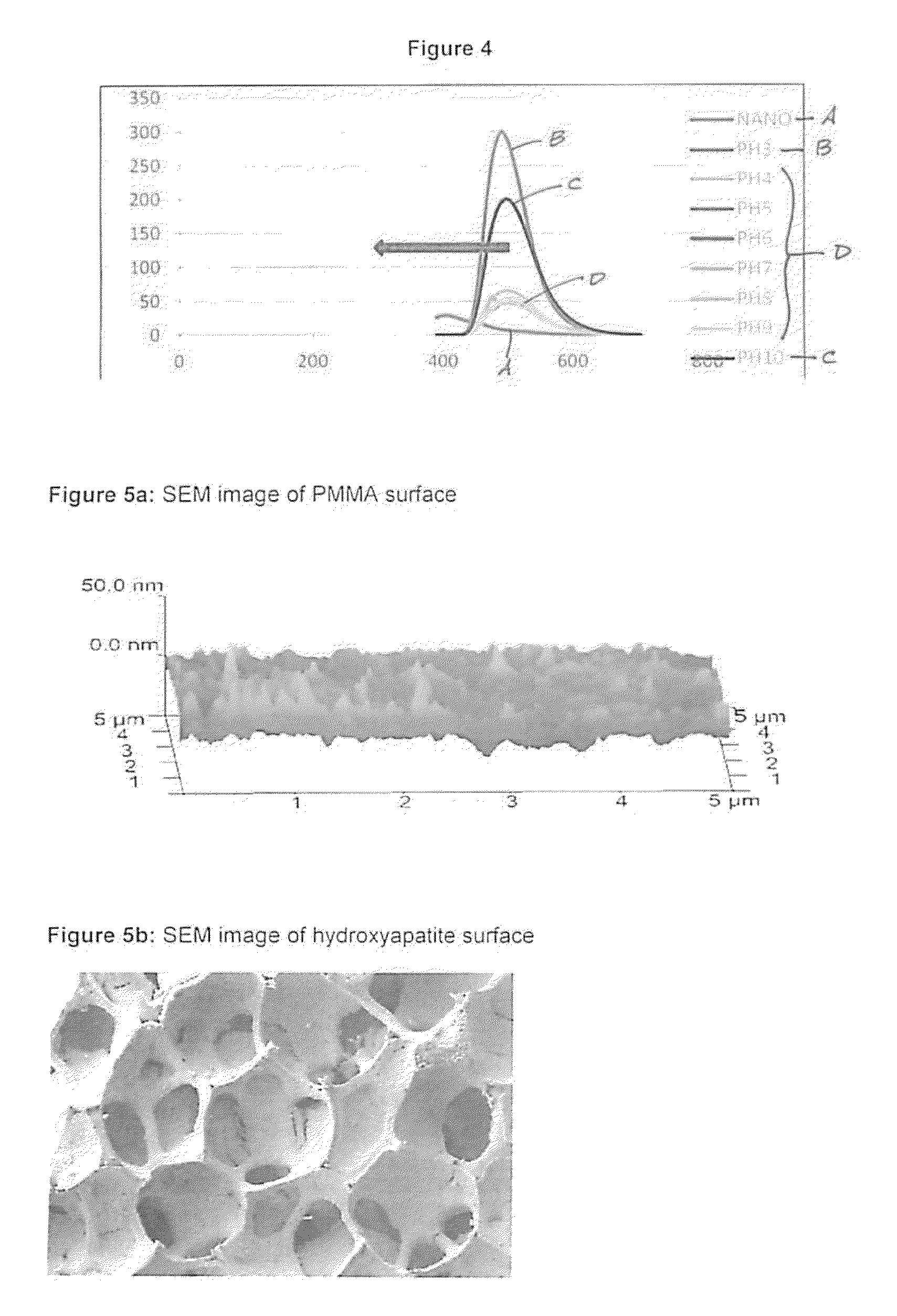Controlled-release antibiotic nanoparticles for implants and bone grafts
a technology of antibiotic nanoparticles and implants, which is applied in the direction of prosthesis, peptide/protein ingredients, lighting and heating apparatus, etc., can solve the problems of not being able to extend the use of nanoparticulate systems to bone replacement, and the proportion of antibiotic dose contained in cement is often not available to effectively treat infections, etc., to achieve convenient delivery of antibiotics, improve pharmaceutical properties, and facilitate the effect of drug delivery
- Summary
- Abstract
- Description
- Claims
- Application Information
AI Technical Summary
Benefits of technology
Problems solved by technology
Method used
Image
Examples
examples 1a and 1b
Unilamellar Liposome Formulation (Water-Oil-Water (w / o / w) Emulsion)
[0044]Using the phase-transfer method, the organic phase (vitamin F or vitamin E) is loaded with L-α-phosphatidylcholine or palmitic acid (surfactants). Palmitic acid has a critical micelle concentration (CMC) of about 8.0 g / L. Surfactants that have low CMC values are more suitable for emulsion formations because they can be used in smaller amounts relative to other surfactants with higher CMC values, and produce the same desired effect. Therefore, a surfactant such as stearic acid (3.8), oleic acid (5.0) and linoleic acid (2.5) can also be used in this formulation. The hydrophilic drug vancomycin (anti-bacterial) or acyclovir (anti-fungal) is dissolved in water. The water phase is titrated dropwise into the organic phase with constant stirring under low heat. This procedure creates a water-in-oil (w / o) emulsion, and reverse micelles are formed within the emulsion. With the aqueous drug solution encapsulated inside t...
example 2
Multilayer Liposome Formulation (Water-Oil-Water-Oil (w / o / w / o) Emulsion)
[0048]An organic phase is prepared by dissolving 500 mg of AOT (sodium 1,4-bis[(2-ethylhexyl)oxy]-1,4-dioxobutane-2-sulfonate) in 4 ml of ethyl acetate. A hydrophilic drug (23 μM of fluorescein dye used as an indicator) is dissolved in about 1 ml of water to form an aqueous phase. The aqueous phase is titrated dropwise into the organic phase with constant stirring. Reverse micelles are formed within this water-in-oil (w / o) emulsion. After mixing, 2 ml of the organic phase is evaporated, resulting in a water-in-oil emulsion having a total volume of 3 ml.
[0049]The final water phase is formed by dissolving 500 mg of AOT in 40 ml of water. AOT is only slightly soluble in water. If desired, a more hydrophilic polymer such as phosphocholine and palmitic acids can be used in this step. The above water-in-oil emulsion is added dropwise into the final water phase to form a water-oil-water (w / o / w) liposome.
[0050]Because t...
example 3
Reverse Micelles (Water-oil (w / o) Emulsion)
[0052]2.2 grams of AOT is mixed with 5 ml of vitamin E (or vitamin F) with gentle heating and continuous stirring. Once the AOT is dissolved, a water phase comprising 2 ml of water and the drug is added dropwise with constant stirring. The mixture is then sonicated for 15 minutes.
[0053]Examples 1A, 1B, 2 and 3 are designed to encapsulate and deliver hydrophilic drugs. Hydrophobic drugs are known to be more difficult to transport into targeted cells. The present invention also provides a unique system for encapsulating and delivering hydrophobic antibiotics.
PUM
| Property | Measurement | Unit |
|---|---|---|
| Time | aaaaa | aaaaa |
| Hydrophobicity | aaaaa | aaaaa |
Abstract
Description
Claims
Application Information
 Login to View More
Login to View More - R&D
- Intellectual Property
- Life Sciences
- Materials
- Tech Scout
- Unparalleled Data Quality
- Higher Quality Content
- 60% Fewer Hallucinations
Browse by: Latest US Patents, China's latest patents, Technical Efficacy Thesaurus, Application Domain, Technology Topic, Popular Technical Reports.
© 2025 PatSnap. All rights reserved.Legal|Privacy policy|Modern Slavery Act Transparency Statement|Sitemap|About US| Contact US: help@patsnap.com



